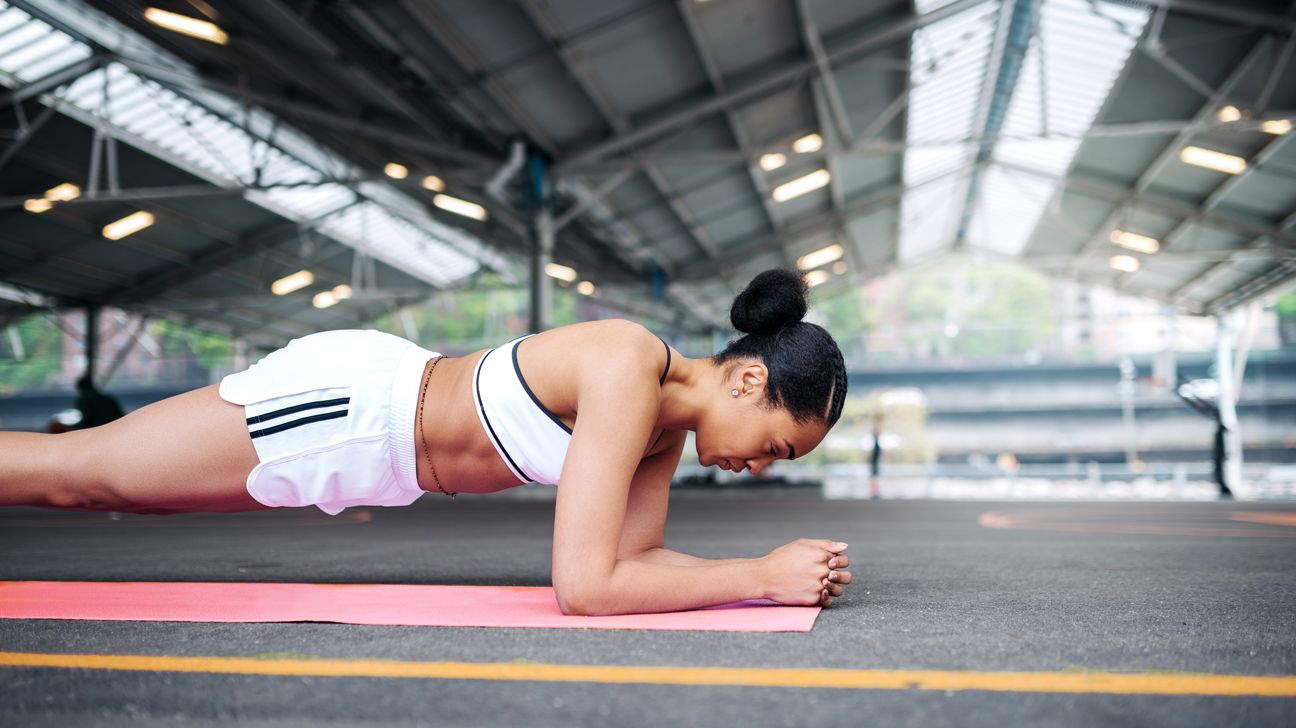Oh, planks, how we love to hate you. Planks may feel like someone’s lit a fire in your belly (and not in an inspiring way), but it’s hard to miss the abs-of-steel results of a devoted plank routine.
Forearm planks are just one of many variations on this fitness staple. If you want to change up your routine and keep your abs guessing, forearm planks and their variations are a good way to spice up your workout.
Before you start, get out a yoga mat or find a carpeted area to provide some cushioning for your elbows.
- Lie facedown on the floor with elbows directly under shoulders and forearms in front of you, palms to the floor.
- Tighten your abs as you raise up onto elbows and toes with the weight of your body spread evenly among toes and elbows. Keep palms of hands against the floor and spread your fingers for stability.
- Maintain a straight line from heels to shoulders. (No saggy bottom or bottom raised to the sky!)
- Hold this position for as long as you can maintain the correct form.
Congratulations! You just did a forearm plank — simple, easy, and painfully good for your abs.
Forearm planks can be modified to accommodate your fitness level, whether you need to work your way up to a full plank or want an extra challenge.
- Knee to floor: If your abs are a little weak, put your knees on the floor. Be sure to keep a straight line from your knees to the top of your spine.
- Palms up: Turn your palms up to challenge your shoulders. When you take away that stability, you force your shoulder muscles to work harder.
- Side plank: Shift your weight onto one elbow, place the other hand on your hip or point it toward the sky, and stack your feet. Keep a straight line from heels to shoulders. Hold until you can no longer maintain proper form. Repeat on the other side.
- Forearm plank repeater: While holding a forearm plank, raise your right foot and tap your left ankle. Put your right foot back down, and then tap left foot to right ankle.
- Single-leg plank: Raise one leg while holding a forearm plank. Repeat on the other side.
- Single-arm plank: Yup, instead of raising one leg, you’re going to one-arm it. Hold your forearm plank while extending one arm in front of you.
Forearm planks target the transverse abdominis (that pesky ab muscle below your belly button), the rectus abdominis (the large muscle in your midsection), and the internal and external obliques (the side muscles of your abdominal region).
Taut abs not only keep your tummy flat but also support your lower back, preventing pain and posture problems as you age.
And your abs aren’t the only muscle group getting some attention during the forearm plank. Your shoulders and upper back get a workout too.
- Keep your head and neck in a neutral position — not hanging down or raised above your shoulders.
- Imagine a straight line that starts at your heels (or knees) and extends out the top of your head. You have to maintain that line for the entire plank. A saggy lower back puts extra pressure on your spine, but if your hips are raised above the shoulders, your abs aren’t fully contracted.
- Breathe. Contracting your abs may inadvertently cause you to hold your breath. Your muscles (and brain) need oxygen, so consciously remind yourself to breathe.
- Don’t get stuck watching the time. Form is more important than seconds on the clock. If your form starts to slip after 10 seconds, release the plank, rest, and try again.


